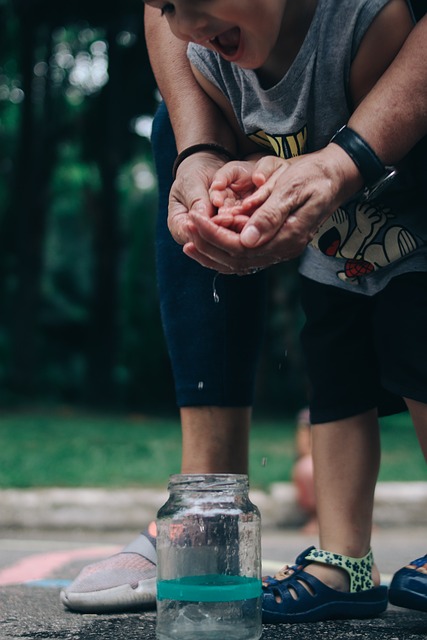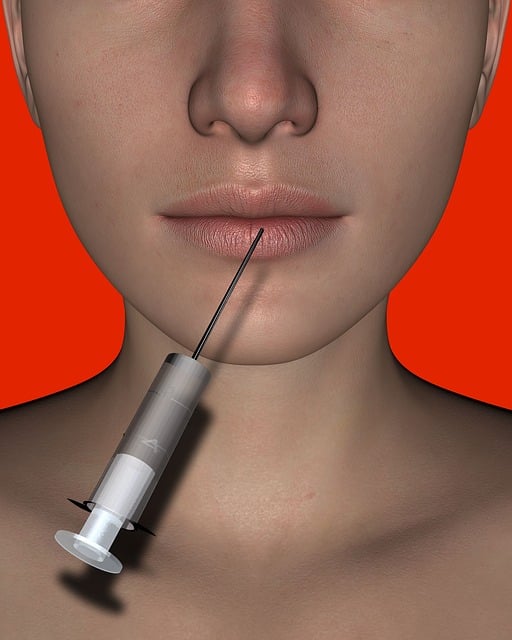Botox, derived from Botulinum Toxin, is a popular anti-aging treatment that temporarily paralyses facial muscles, reducing wrinkles like crow's feet and smile lines. Results typically last 3 to 6 months, with optimal outcomes achieved through balanced touch-up sessions. Treatment involves quick, virtually painless injections into specific muscle groups, with minor redness or swelling dissipating within hours. Post-treatment care includes avoiding strenuous activities and protecting the treated area from sunlight. Misconceptions about invasiveness and duration of results should be addressed, as Botox is generally safe and offers natural-looking enhancements. Alternatives include fillers, chemical peels, microdermabrasion, laser resurfacing, and emerging technologies for anti-aging skincare.
“Uncover the secrets behind Botox’s anti-aging efficacy, particularly its role in treating crow’s feet and smile lines. This comprehensive guide delves into the science and duration of Botox treatments, offering insights on their effectiveness for up to 4 months. Learn how the procedure works, what influences its longevity, and what to expect before, during, and after. Explore maintenance tips, dispel myths, and discover alternative options in the ever-evolving world of skincare.”
Understanding Botox: A Brief Overview

Botox, or Botulinum Toxin, is a natural protein produced by bacteria that has found its way into the world of aesthetics as a popular anti-aging treatment. When injected into specific muscles, Botox temporarily paralyzes them, preventing the contractions that contribute to the formation of wrinkles, particularly around the eyes and mouth. This non-invasive procedure is widely sought after for treating fine lines and wrinkles, commonly known as crow’s feet and smile lines.
For individuals aiming to reduce these delicate facial lines, understanding the duration of Botox’s effects is essential. Typically, the results of a Botox treatment can last anywhere from 3 to 6 months, depending on various factors such as the individual’s metabolism, the amount of product used, and the specific muscle groups targeted. This time frame offers a significant advantage, allowing patients to maintain a youthful appearance without frequent treatments.
Botox for Crow's Feet: Effectiveness and Duration

Botox is a popular choice for those seeking to reduce the appearance of wrinkles, particularly around the eyes where crow’s feet and smile lines often develop. When injected into specific muscle groups, Botox can effectively smooth out these fine lines and wrinkles, offering both a preventive and corrective treatment option. The results of Botox for crow’s feet and smile lines typically last between 3 to 6 months.
This duration varies based on several factors, including the individual’s metabolism, the amount of Botox used, and the specific muscle groups targeted. Over time, the effects of Botox fade as the toxin is naturally broken down by the body. Regular treatments can help maintain the desired results, ensuring that crow’s feet and smile lines remain less noticeable for an extended period.
The Science Behind How Long It Lasts

The duration of Botox’s effectiveness in reducing wrinkles is determined by several factors, including the area treated, the amount administered, and individual metabolism. When injected into specific muscles responsible for crow’s feet and smile lines, Botox blocks nerve signals that trigger muscle contraction. This prevents dynamic wrinkling caused by facial movements. The effects typically start to appear within 24 to 72 hours after treatment, reaching their peak at around 7 to 10 days. After this initial period, the botulinum toxin gradually breaks down and is eliminated from the body over time.
On average, Botox for crow’s feet and smile lines lasts between 3 to 6 months. During this period, the muscle relaxation it provides allows the skin to appear smoother and more youthful. However, as the effects wear off, the natural production of facial expressions continues, ensuring that dynamic wrinkles don’t reappear immediately. This timeline offers a window of opportunity for individuals to enjoy the aesthetic benefits without requiring frequent treatments, making Botox a popular choice for those seeking to minimize the appearance of fine lines and wrinkles caused by aging or sun exposure.
Factors Affecting Botox Efficacy and Lifespan

Botox treatments for wrinkles, particularly targeting crow’s feet and smile lines, offer a temporary yet effective solution for many individuals. However, several factors influence the efficacy and lifespan of the results. One key determinant is the specific area being treated; facial regions with more movement, like around the eyes and mouth, typically require more frequent injections to maintain results due to continuous muscle activity.
Age also plays a significant role. As we age, our skin produces less collagen, which helps to keep Botox in place. Younger patients may experience longer-lasting results after initial treatments compared to older individuals. Additionally, treatment frequency and dosage are critical; regular touch-up sessions ensure optimal results, while overdoing it can lead to undesirable side effects. The overall health of the patient’s skin and their lifestyle choices, including sun exposure and smoking, can also impact the longevity of Botox results.
What to Expect During and After Treatment

During your Botox treatment for crow’s feet and smile lines, you can expect a quick and virtually painless procedure. A small amount of Botox is injected into specific muscle groups, targeting the areas responsible for the formation of wrinkles. You might feel a slight stinging sensation during the injections, but most patients find it minimal and bearable. After the treatment, there may be some redness or minor swelling at the injection sites, which usually subsides within a few hours.
In the days following your Botox session, you can resume your normal activities, although it’s recommended to avoid strenuous exercise for 24 hours as this can temporarily increase bruising or discomfort. You’ll start noticing the effects of Botox around 2-3 days later, with continued improvement over the next week. This treatment offers a significant reduction in the appearance of fine lines and wrinkles, providing a smoother, more youthful look for up to 3-6 months, depending on the individual.
Care and Maintenance Post-Botox Injection

After receiving Botox injections for crow’s feet and smile lines, proper care and maintenance are essential to maximize the results. It’s crucial to avoid strenuous activities or excessive facial expressions for at least 24 hours post-treatment to prevent spreading the injectables and ensuring optimal absorption. During this time, it’s recommended to keep the treated area clean and moisturized; gentle cleaning with a mild cleanser and avoiding harsh products is best.
While your face heals, steer clear of direct sunlight and use sunscreen daily to protect the skin. Refrain from picking or rubbing the treatment sites, as this can cause discomfort and potentially lead to bruising. Additionally, be mindful of any changes in skin texture or sensitivity; if you notice unusual reactions, consult your healthcare provider promptly. Good hydration and a balanced diet also support skin health and recovery.
Common Myths and Misconceptions Debunked

Many individuals seeking botox treatments for wrinkles, particularly around the eyes (crow’s feet) and smile lines, often encounter a plethora of misconceptions. It’s common to hear questions like, “How long does Botox last?” or worries about side effects that aren’t typically experienced. One of the most persistent myths is that botox treatments are overly invasive and carry significant risks. In reality, when administered by a qualified professional, botox for crow’s feet and smile lines is generally safe and effective, with minimal downtime.
Another misconception revolves around the duration of results. Unlike some cosmetic procedures, botox effects aren’t permanent. Instead, they typically last between 3 to 6 months, varying based on individual factors like muscle activity and metabolism. This temporary nature makes botox an attractive option for those seeking a subtle, natural-looking enhancement without committing to a longer-term solution. Understanding these facts can help prospective patients make informed decisions about their skincare journeys.
Alternative Treatments and Future Prospects

While Botox is a popular choice for treating wrinkles, particularly for crow’s feet and smile lines, it’s not the only game in town. There are several alternative treatments that offer promising results. Fillers like hyaluronic acid or collagen injections can provide immediate and lasting results similar to Botox, but with slightly different effects. Chemical peels, microdermabrasion, and laser resurfacing procedures can also help reduce the appearance of wrinkles by promoting skin cell turnover and collagen production.
Looking ahead, ongoing research continues to explore new methods for non-invasive wrinkle treatments. Future prospects include advancements in topical creams with active ingredients that mimic Botox’s effects, as well as innovative technologies like high-intensity focused ultrasound (HIFU) and radiofrequency treatments. These developments hold the promise of even more effective and long-lasting solutions for maintaining youthful skin without surgical interventions.
